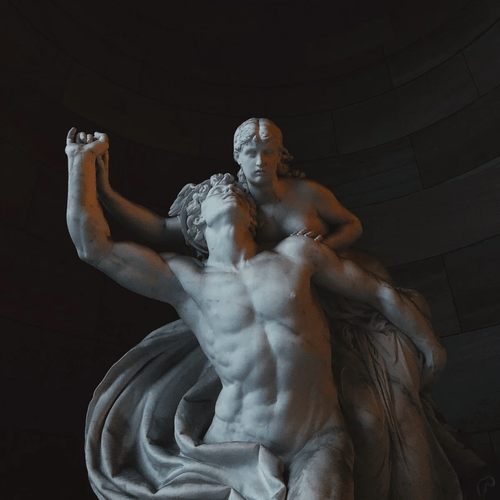Article: The divine, crystal-blowing wind

The divine, crystal-blowing wind
On July 13, theaters will be illuminated with the colours of Asgard for the release of the next Thor: Love and Thunder by Taika Waititi. In preparation for its release in theaters, the god of thunder is accompanied by a divine wind that blows directly into our workshops and the canes of our glassmakers. The result is mythical crystal pieces that are just waiting to bring out the ancient elegance of your space.
This month, Cristallerie de Montbronn honors mythological deities and highlights its pieces inspired by the inhabitants of Mount Olympus.
Take a look:
CIRCÉ
Named after the powerful Greek enchantress, our brand new Circé tableware collection also references the Homeric mermaids in its precious design.
According to Greek legend, Circe was a famous enchantress, daughter of the sun god Helios and the oceanid Perseis (or the goddess Hecate, depending on the version). Known for her dangerous powers of metamorphosis, she is often considered to be a deity herself. She notably appears in the 10th chapter of the Odyssey, where she transformed the companions of Ulysses into pigs with the help of her philtres and incantations, Ulysses himself protected by the moly of Hermes, therefore ordering her to give back human appearance to her fresh victims. Following this, she was a considerable ally of the hero in the continuation of his epic. Later, Ulysses had an unfortunate encounter with the mermaids, whose spell had been warned by Circe. "Be careful, you will meet mermaids. They will try to attract you. You must not listen to their song or you will be stranded against the rocks", the enchantress had told him, as well as the idea of inserting wax plugs in the ears of the crew, which saved everyone.
Therefore, our Circé collection is inspired by these mythological sayings in its name but also in its design which reminds the scales of the mermaids.

Circe , Wright Barker, 1889
APHRODITE
Born from the foam of the most precious currents, our mythical gardener with divine beauty is inspired by the goddess of Love.
Great goddess of fertility and love among the Babylonians and Phoenicians, Aphrodite became one of the twelve Olympian deities among the Greeks, the goddess of love and beauty. Coming out of the foam of the sea and pushed by the Zephyr, she first arrives in Cythera and then in Cyprus, and under her steps, the earth blooms. She is welcomed by the Seasons and led to the Immortals who are immediately enamored of her. Because of her aquatic birth, she is naturally favorable to sailors and calms the agitated sea. Her adventures and myths are too numerous to tell, but we will remember her most famous attributes that our mythical gardener shares: an incredible beauty, a divine charm, and a dangerous sensuality.

Nascita di Venere , Sandro Botticelli, 1480
FLAMME
The divine flames of Hephaestus have escaped from his foundry and landed right in our workshops. Discover our exceptional Flamme pieces, references to the god of fire and volcanoes as well as the Titan transmitter of fire.
Hephaestus has a tragedy and a melancholy that distinguishes him from the other deities of Olympus. Thrown down from the top of Olympus by Hera at birth for his ugliness, Hephaestus will spend his "life" limping. From this trauma will be born the interest of the god of the forge for the manufacture of weapons and other tools. He is also the god of fire, volcanoes, and metallurgy, which ties him closely to the Titan Prometheus, whose story is told in our History. Indeed, Hephaestus is often considered by authors as the guardian of fire, which Prometheus steals to give it to humans. Following this, under the orders of Zeus, Hephaestus chains the Titan to a rock where an eagle will come every day to devour him, bit by bit. Filled with pity, the melancholic god of fire pities the Titan and is ordered by Zeus to take revenge for Prometheus' actions, and it is at this moment that he will create Pandora, a beautiful young woman who will release the evils of humanity.
Through these two acts, Hephaestus and Prometheus are closely related and are thus both honored in the creation of our Flamme pieces.

Vulcan chaining Prometheus , Jean Charles Frontier, 1774






